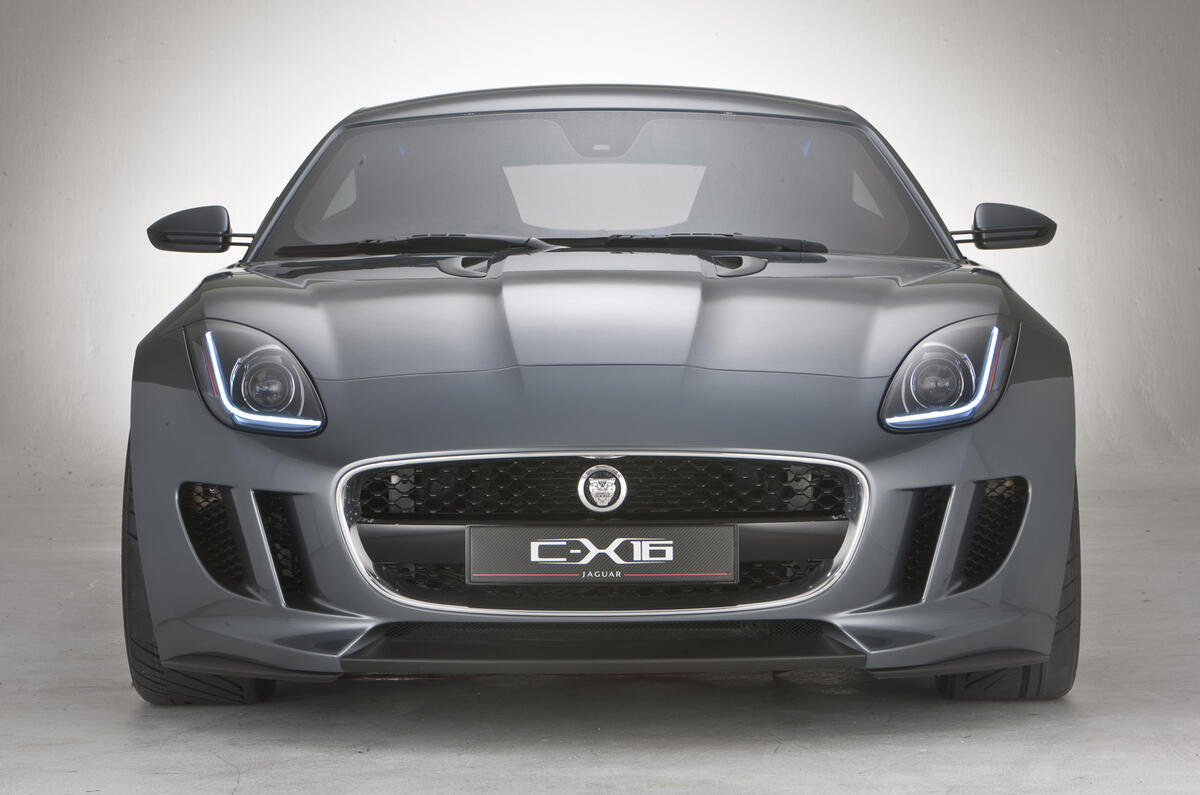This Jaguar C-X16 will cost between £55,000 and £70,000 when it goes on sale, company boss Adrian Hallmark has confirmed at the Frankfurt motor show.
However, despite speculation that it could go on sale next year, he declined to put a date on when the Porsche 911 and Aston Martin Vantage V8 rival will make production.
The 4.4m-long C-X16, which has been officially unveiled at this week's Frankfurt motor show not only heralds the arrival of a stand-alone driver’s car for the brand, but its hybrid drivetrain and new exterior and interior design language also give clear indications about Jaguar’s future direction.
“Expressing lightness” is said to be a new mission statement for the Jaguar design team. The C-X16 is built around the next-generation aluminium XK platform, but with a shorter (2622mm) wheelbase. Its hybrid drivetrain helps it to sprint to 62mph from standstill in just 4.4sec and on to a top speed limited to 186mph.
Hybrid powertrain
The drivetrain is based around a new front-mounted, supercharged 3.0-litre V6, which develops 375bhp and 332lb ft of torque. The engine is a modular development of Jaguar’s current AJ-V8, using the same block architecture and quad-cam, four-valve-per-cylinder head design made of recycled aluminium.
This EU6-compliant engine features second-generation direct injection, a higher 10.5:1 compression ratio and a sixth-generation Rootes-type supercharger. The upshot is an impressive specific output of 127bhp per litre.The engine gets Jaguar’s new Twin Solenoid Starter stop-start system and is hooked up to a new version of the familiar ZF eight-speed auto gearbox with an integrated electric motor.
This new engine — which is expected to appear in other Jaguar Land Rover vehicles before the end of next year — features a patented system of “independently rotating balancer shaft weights” at both ends of the engine. This counters one of the biggest issues with downsizing engines: the loss of refinement as the number of cylinders is reduced.
In pure electric mode, using the 95bhp, 173lb ft electric motor, the C-X16 can travel at up to 50mph for short distances, drawing on the small 1.6kWh battery pack situated behind the seats. The combination of a downsized engine, electric motor assist and stop-start gives the C-X16 CO2 emissions of just 165g/km. The battery is recharged via a KERS (Kinetic Energy Recovery System) arrangement incorporated into the back axle.
As well as a 0-62mph time of 4.4sec and a limited 186mph top speed, the C-X16 can cover the 50-75mph sprint in just 2.1sec. The ‘push to pass’ button mounted on the steering wheel allows access to the extra boost, which gives the driver 10sec of maximum power.
























Add your comment